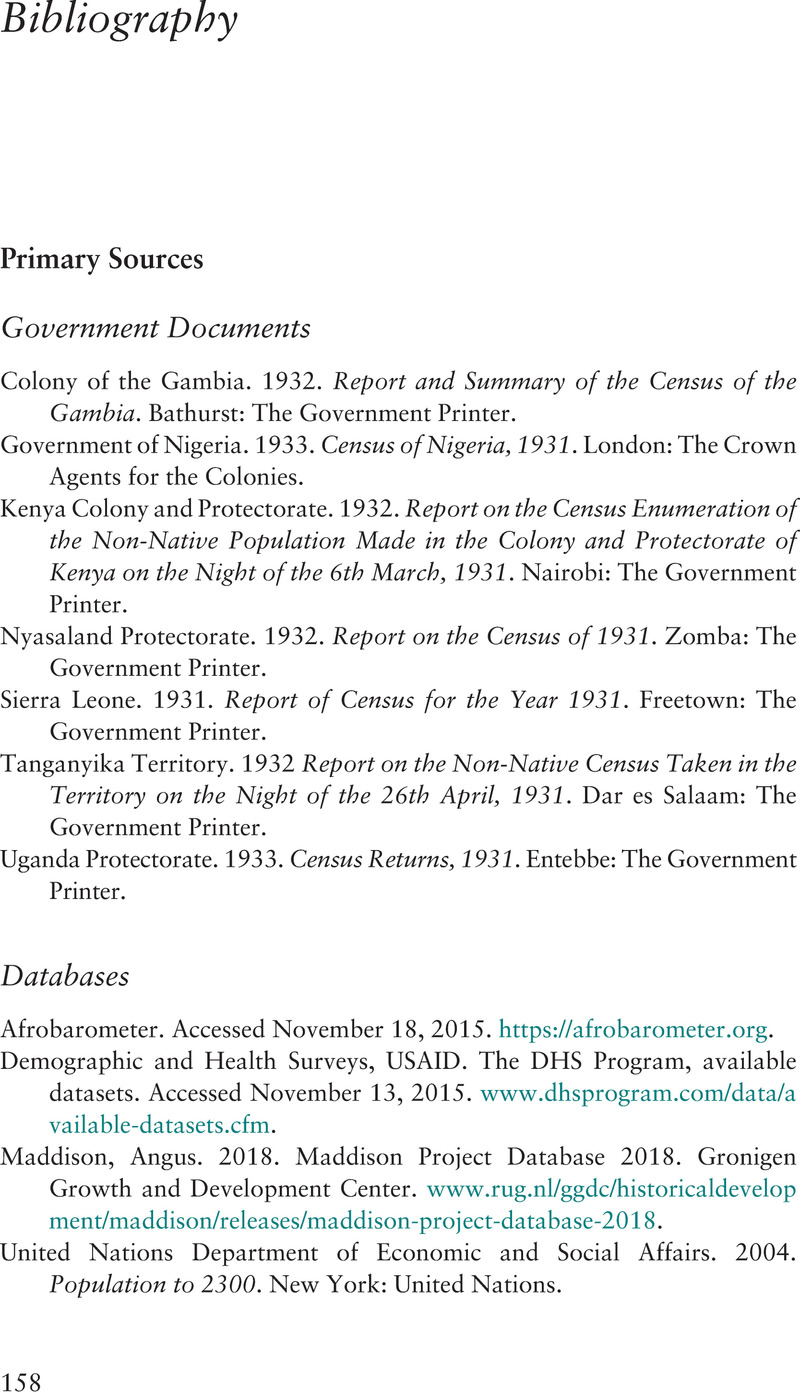 The Wealth and Poverty of African States
The Wealth and Poverty of African States Book contents
- The Wealth and Poverty of African States
- New Approaches to Economic and Social History
- The Wealth and Poverty of African States
- Copyright page
- Contents
- Figures
- Tables
- Preface
- Acknowledgments
- Introduction
- 1 A New Economic History for Africa?
- 2 Seeing Like an African State in the Twentieth Century
- 3 New Data and New Perspectives on Economic Growth in Africa
- 4 State Capacity across the Twentieth Century: Evidence from Taxation
- 5 Wages and Poverty: From Roots of Poverty to Trajectories of Living Standards
- 6 Conclusion
- Appendix to Chapter 3
- Notes
- Bibliography
- Index
- References
Bibliography
Published online by Cambridge University Press: 06 January 2022
- The Wealth and Poverty of African States
- New Approaches to Economic and Social History
- The Wealth and Poverty of African States
- Copyright page
- Contents
- Figures
- Tables
- Preface
- Acknowledgments
- Introduction
- 1 A New Economic History for Africa?
- 2 Seeing Like an African State in the Twentieth Century
- 3 New Data and New Perspectives on Economic Growth in Africa
- 4 State Capacity across the Twentieth Century: Evidence from Taxation
- 5 Wages and Poverty: From Roots of Poverty to Trajectories of Living Standards
- 6 Conclusion
- Appendix to Chapter 3
- Notes
- Bibliography
- Index
- References
Summary

- Type
- Chapter
- Information
- The Wealth and Poverty of African StatesEconomic Growth, Living Standards and Taxation since the Late Nineteenth Century, pp. 158 - 175Publisher: Cambridge University PressPrint publication year: 2022
